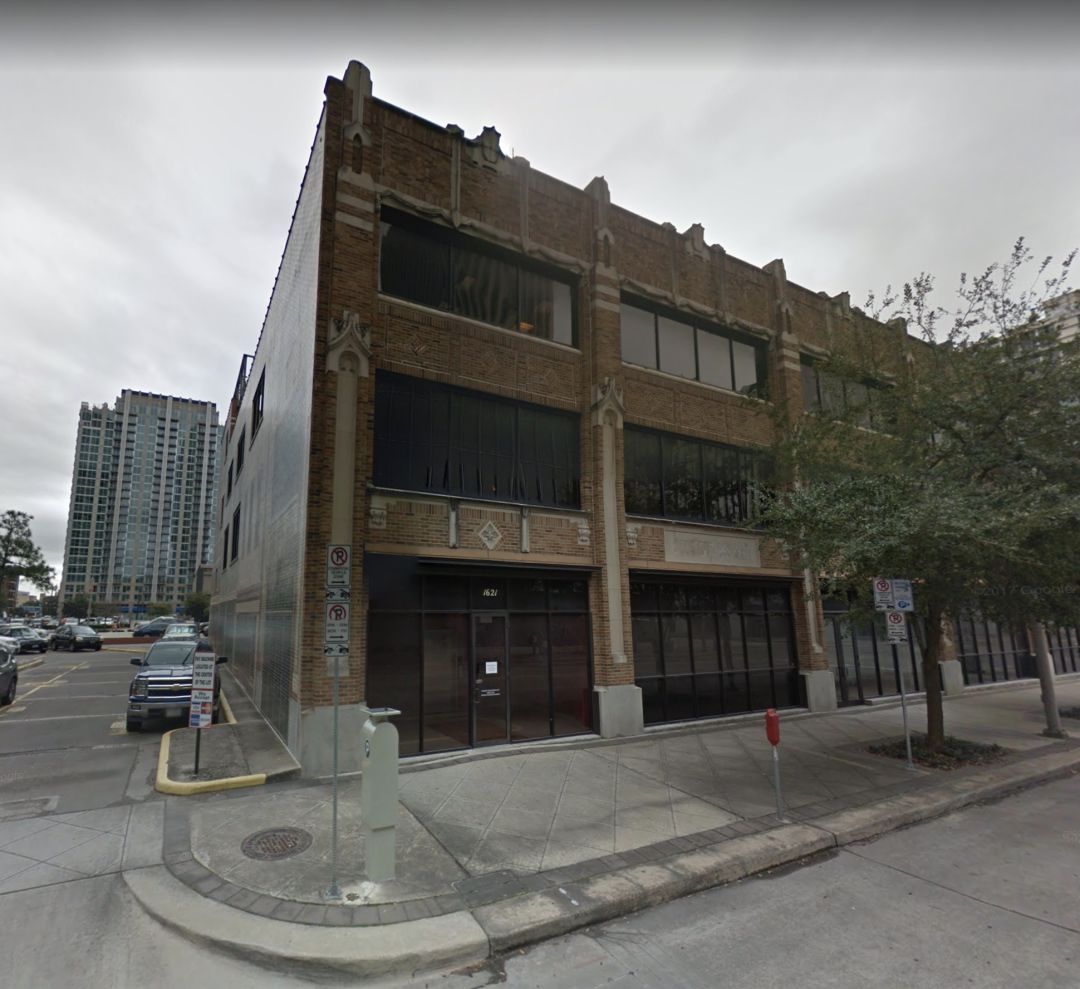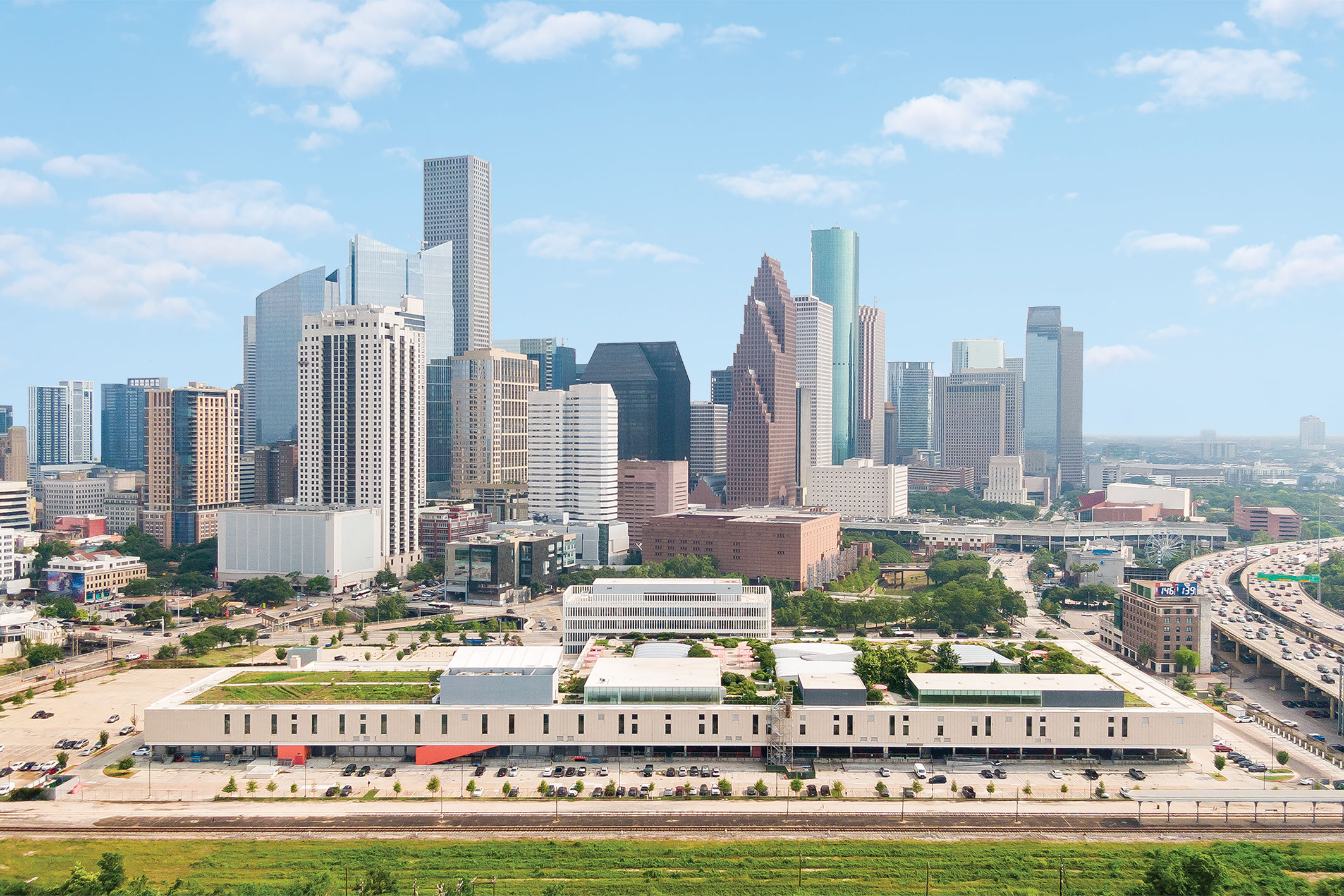Farewell to the '20s-Era Former Houston Press Building

Fare thee well.
Image: Screenshot via Google Maps
A pre-emptive R.I.P. to the downtown building that once housed the Houston Press at 1621 Milam. Chron.com today reported that Chevron, which acquired the property in 2013, plans to demolish the structure. Its age is ambiguous—city appraisal records put it at 95, though other reports say it's 91. Either way, it's old, and apparently it's "reached the end of its useful life," Chevron said in a statement to the Chron.
It's the latest example of Houston's tear-down culture, the troubling propensity for sentencing structures to the wrecking ball. Razing is so pervasive here that real estate blog Swamplot publishes a "Daily Demolition Report," and, as evidenced by Chevron's announcement, not even historic buildings are spared this fate. Between 1999 and 2011, 75 buildings in the second edition of AIA Houston's Architecture Guide—an index of storied, eccentric, and otherwise important edifices around the city—were demolished or defaced, author Stephen Fox notes in the third edition's introduction. Even the Astrodome faced an uncertain future before Harris County commissioners approved a multimillion-dollar renovation plan earlier this year. If the Eighth Wonder of the World's not guaranteed safety, is anything?
Built in either 1923 or 1927, depending who you ask, 1621 Milam was originally home to Shelor Motor Company and later Gillman Pontiac. In those early days, the dealership occupied the first floor while upper levels housed mechanics and, obviously, cars. "The building is basically a parking garage ... it's a nicely designed garage, it's got good architectural ornamentation, but it's a garage," says David Bush, executive director of Preservation Houston. "That's basically been its function for its entire history."
That's why he finds Chevron's remarks curious that the building is no longer useful. "It's not like, 'oh my God, what do you do with a building like this?' You park cars in it. It's pretty clear what you do," Bush says.
Chevron has yet to specify new plans for the site, which is another sticking point for Bush. "We have a history of knocking down good buildings and not doing anything after that. We have a lot of vacant lots where good architecture once stood," he says. "That's always the frustration with these kinds of projects: We lose something good and we don't get anything better."
Houston Press set up shop in the old building in 1998 and stayed through 2013 before moving to a new office on La Branch. Chevron acquired the building that same year. The structure retained its original glass windows on the second and third floors until 2010, former Press staffer Abrahán Garza reported, and its distinct trompe l'oeil mural was added in 1994 by artist Suzanne Sellers.
The building bore witness to plenty of change in its nine-plus decades, including a whopping from Hurricane Ike in 2008 the same week the Press scrambled to put out its annual Best of Houston issue as water poured through the roof vents into the office space. "Still not quite sure how we pulled it off, but it's one of my fondest professional memories," says former Presser Monica Fuentes, now art director here at Houstonia.
Houstonia editor-in-chief Cathy Matusow is a vet of the alt-weekly, too, where she worked for 10 years, the last several as managing editor. She recalls her decade in that space this way:
I’ll always remember the sound of my card clicking open the glass door by the front desk, allowing me entry to the building. The cubicles filled with PR swag, books and CDs, keepsakes from stories people had written. The occasional desk drawer with a bottle inside it. One reporter’s archeological layers of paper, which he swore were filed according to some sort of system. The path snaking through editorial, around production and design, past sales and the front desk, and back to edit. Sometimes we’d run along it on Fridays after finishing another week’s paper, whooping. The hideous fridge. The vats of coffee. The passive-aggressive notes we left each other. Another round of laughter ringing out after another snarky group email. Phone interviews; rising voices; old-school recorders; lightning-quick typing. Heading to lunch in the Exxon cafeteria next door. People streaming in and out to smoke. Everyone in the building way too wrapped up in each other’s lives. A million memories in those walls. RIP.




